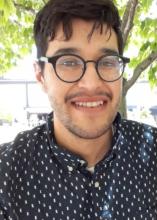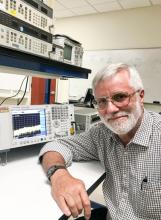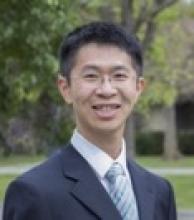Satellite communications Basics: From Orbits to Modulation

Ian Furniss
Satellite Solutions Applications Engineer
Keysight Technologies, Santa Rosa, CA
Thu, 04/20/2023
Abstract: Satellite communications experience many unique challenges in closing the link budget and providing reliable and resilient data throughput. These challenges range from overcoming the vast distances to managing atmospheric perturbations to generating unique modulations that are both spectrally and power efficient. In this discussion we will briefly cover these various topics including some modulation basics and dive into some of the only communications standards that exist for satellite communications and why they are used to overcome these challenges. This will lead to a brief introduction of some test and measurement solutions that enable these challenging networks to be created and maintained from concept to launch.
BIO: Ian is an Applications Development Engineer in Keysight’s Space and Satellite Solutions group, currently focused on helping commercial and government entities accelerate their visions in the Low Earth Orbit (LEO) mega-constellation new space race. Ian’s areas of expertise span signal analysis and generation, particularly tackling design and test challenges in Digital Video Broadcasting - Satellite Second Generation Extended (DVB-S2X), DVB - 2nd Generation Return Channel via Satellite (RCS2), custom Orthogonal Frequency-Division Multiplexing (OFDM), and 5th Generation Non-Terrestrial Networks (5G NTN) at frequencies from Ku- and Ka-band through V- and W-band.
New Product Introduction

Mr. David House
Hardware Engineer
Keysight Technologies, Santa Rosa, CA
Thu, 04/06/2023
Abstract: New Product Introduction Engineering is a field of engineering that ensures the quality and robustness of new designs and processes. The role of the NPI engineer is to take a design from R&D and help get it ready for full scale production. This talk will delve into the tasks and skill sets that are needed and developed as an NPI engineer.
Bio: David House is a Hardware Engineer at Keysight working in the Network Analyzer NPI group. He has also worked as a software engineer developing Human Machine Interfaces for a local security electronics company. He received his MS and BS degrees from Sonoma State University.
Key Technologies for Upgrading Cable Television Networks

Mr. Chris Day
Director
Design Center, Analog Devices, Santa Rosa, CA
Thu, 03/16/2023
Abstract: The movement towards a remote workforce brought on by the COVID pandemic have combined with competition to place strong pressure on Cable Television operators to increase their network performance. Recent industry initiatives are touting up to 10 GBps using the existing coaxial cables with upgraded repeater amplifiers. A new DOCSIS (Data Over Cable Service Interface Specification) standard has been approved with significant trials slated for later this year. The new specification, DOCSIS 4.0, supports two divergent architectures each with strengths and weaknesses.
In this presentation, physical-layer technologies that enable DOCSIS 4.0 systems to reach their goals are discussed. Achieving higher levels of signal output to overcome losses in cables without adding distortion is essential to transmit more complex signal modulation that improve spectral efficiency. Improved amplifier linearity continues to be a key enabler for many communication networks. It can be achieved through a combination of newer device technologies such as GaN (Gallium-Nitride) and careful design with an array of linearization circuit techniques.
Bio: Chris Day has 35 years of experience in RF circuits, systems, and markets. After working at Hewlett Packard Santa Rosa for 9 years as an R&D Engineer on Vector Network Analyzers, he became an entrepreneur in the Cable Television industry. He co-founded three companies over a 25-year period, including TriAccess Technologies (acquired by TriQuint Semiconductor in 2009) and OneTree Microdevices (acquired by Analog Devices in 2017). He currently works for Analog Devices as a Design Center Director in their Santa Rosa office. He has a BSEE from UC Berkeley and an MBA from Golden Gate University. He has 6 patents on broadband amplifier linearization.
How a Scottish academic in 1873 set the stage for today’s global communications

Mr. Rob Rowlands
Volunteer Faculty
Engineering Department, SSU
Thu, 03/02/2023
Abstract: Hard as it is to believe today, the connection between electricity and magnetism was not made until early in the 19th Century. James Clerk Maxwell brought together field theories from Gauss, Ampere and Faraday into a unified set of equations. At the publication of his “Treatise on Electricity and Magnetism” 1873, radio had not yet been demonstrated and the electromagnetic properties of light were not understood. Today these equations are the basis of our modern world allowing us to carry powerful communications tools in our pocket or place a telescope in space a million miles away. The talk is a review of some of the miracles that followed from the math, though understanding the vector math is not required (119 words).
Bio: Rob received a Bachelor of Engineering degree in electrical engineering from the University of Canterbury in Christchurch, New Zealand in 1971. He was a Transmission Engineer in the NZ Post Office for 22 years, followed by 21 years with HP and Agilent in the SF Bay Area in Business Development and sales of communications test equipment. Since 2017 he has been a volunteer lecturer teaching a popular RF Test Laboratory class at Sonoma State University. He is semi-retired but still selling test equipment for Gap Wireless. Rob is a life member of IEEE
Snap-Shot 3D Cameras

Dr. Weijian Yang
Associate Professor
Department of Electrical and Computer Engineering, University of California, Davis
Thu, 02/16/2023
Abstract: Three-dimensional (3D) imaging through a compact device could enable many applications in mobile consumer electronics and biomedical endoscopy. Conventional 3D cameras are bulky and require taking multiple photos to synthesize a 3D scene. Here, I will introduce a new type of 3D camera. It replaces all the bulk optics by a single layer of optical mask and can be made very compact. It takes a snap-shot of the 3D object or scene, and then recovers the 3D information through computational algorithms. Here, I will discuss the two 3D cameras that we recently developed, which can image 3D microscopic objects or 3D macroscopic scenes. Both cameras are composed of a single piece of randomly positioned microlens array and an image sensor. We develop highly-efficient computational algorithms to reconstruct the 3D objects and 3D scenes from a single camera exposure. Our 3D cameras open new avenues for high speed 3D imaging with a compact device footprint.
Bio: Weijian Yang is an associate professor at the Department of Electrical and Computer Engineering at the University of California, Davis. He received his undergraduate degree from Peking University and a PhD from the University of California, Berkeley, all in Electrical Engineering. After postdoctoral training in neuroscience at Columbia University, Dr. Yang started his own laboratory at UC Davis in late 2017. His current research aims to develop advanced optical methods and neurotechnologies to interrogate and modulate brain activity, with a goal to understand how neural circuits organize and function and how behaviors emerge from neuronal activity. He is a recipient of the Career Awards at the Scientific Interface from Burroughs Wellcome Fund in 2016, the Early Career Award from National Science Foundation in 2019, and the Science and PINS Prize for Neuromodulation (second prize) from American Association for the Advancement of Science in 2021.